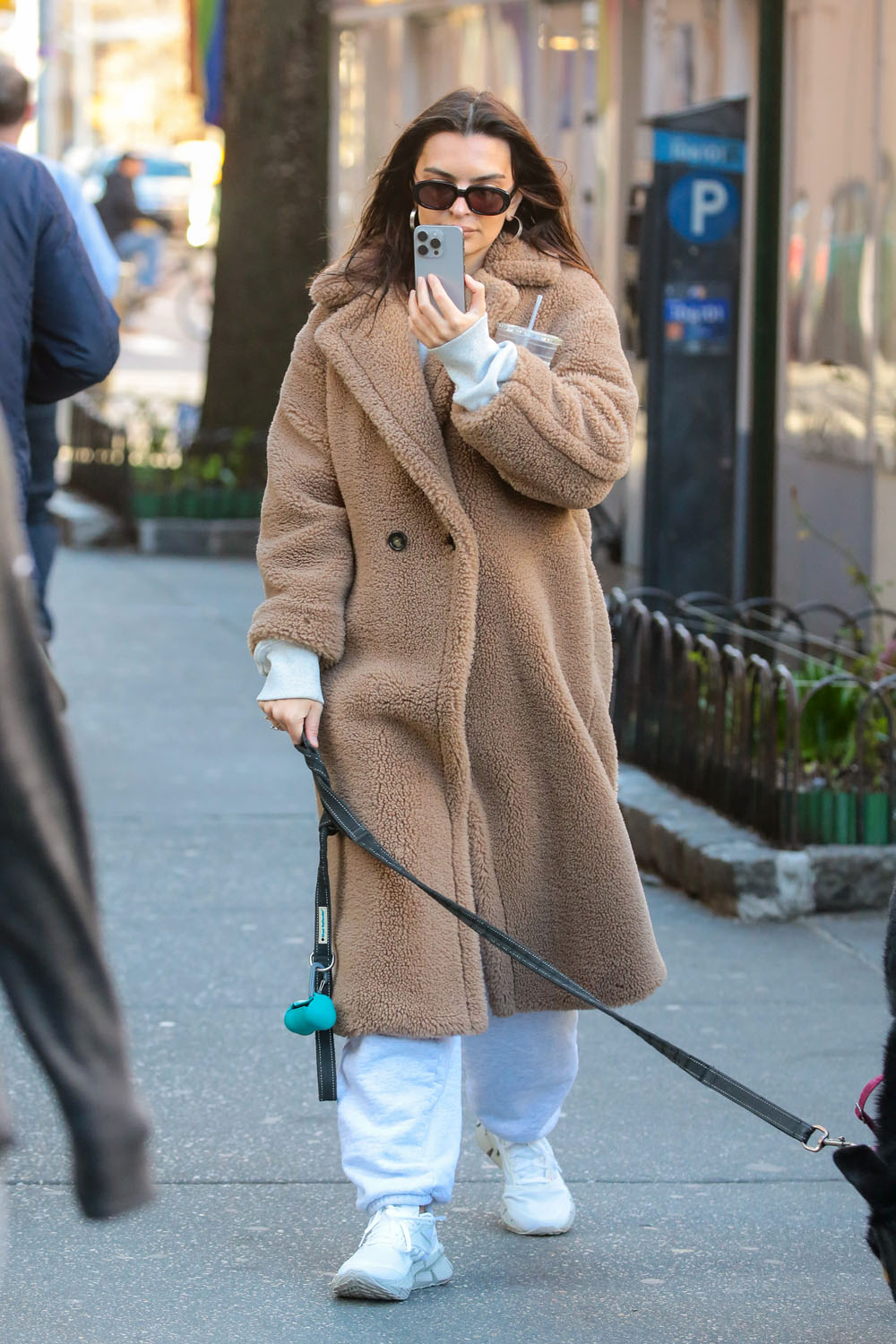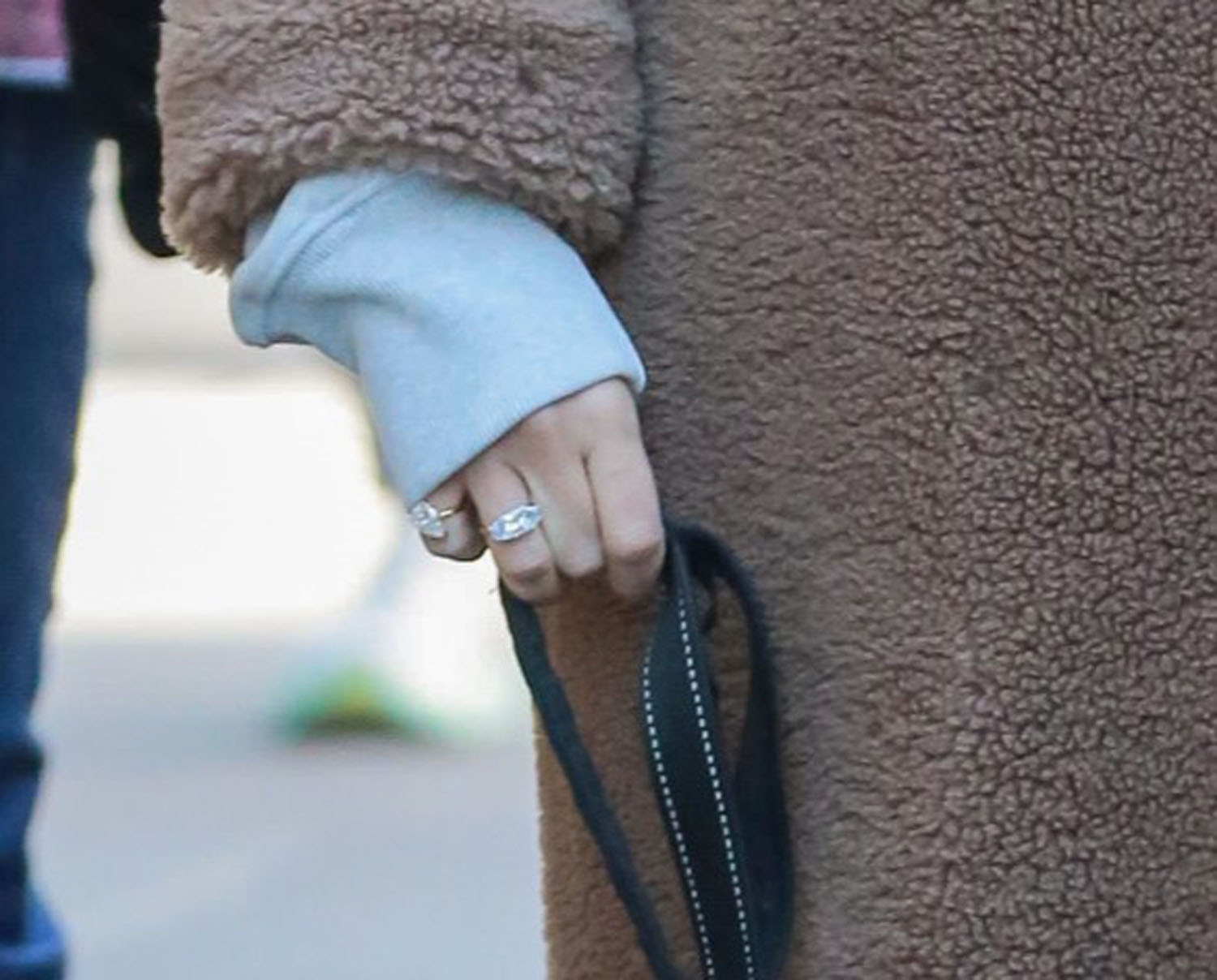EmRata’s statement jewelry



Not even two full years after filing for divorce from Sebastian Bear-McClard, supermodel Emily Ratajkowski had her engagement ring reset into two ‘divorce rings’, and debuted her new but old bling in series of sexy topless selfies.
The divorce rings are, first of all, stunning, but secondly, extremely symbolic. EmRata says she was inspired by an essay called The Unravelers written by her friend, Stephanie Dandler. The essay covers a lot of history, ideas and themes, but there is a part of the essay where it becomes very clear what inspired her to reinvent these rings.
To put it plainly, EmRata is one of the baddest bitches of this generation. I’m careful to specify this generation because there are so many older women that have been there, done that, came out on top, or reinvented the game entirely, and I in no way want to discredit the greats. But for a 32-year-old divorcee and single mom, EmRata is helping to counter a lot of the narrative we are force-fed by friends, family and society alike that imply our worth is attached to two things - men’s desire to marry us and our fertility.
A few years ago I never could’ve imagined giving such a compliment to a young, white woman who got her start as a child actor and had things kick into high gear after dancing in a Robin Thicke video (and really scoring with the whole genetics thing). But when she started opening up about her divorce and sharing her worldview on things, I started finding myself become increasingly drawn to her – for several reasons other than the visibility it gives me. But that’s important, too.
I appreciate her story. It resonates with me, and I truly admire her thoughts. I see a lot of myself in her and realize how crucial it is to have a voice that reminds us that neither a failed marriage, single parenthood, or being labelled by others means that life is over. And I think at its core, that’s one of the messages of her divorce rings. That her marriage may be over, but that life is not. That is what I like about her the most. She is dedicated to pushing the idea that not only is life not over after a divorce, but that it’s just beginning.
“Obviously our culture focuses so much on youth and being young and beautiful as like woman’s only value or femme presenting people’s only value, and I definitely don’t feel that way,” she told Elle. “I’ve lived a lot of lives. I’m 32. I’ve lived a lot of lives already and I plan to live more, and I’m not gonna be shy about that. I’m not embarrassed of that.” I plan to live more. Is that poetry I hear? A word? A verse? Gospel, if you will?
As someone constantly asked about how I was able to move on after my split(s), I never quite know how to answer the question. I mean, I do, because that’s what you do when questions are asked. But there was always something strange about that question that I could never put my finger on. It seemed so obvious to me that you just keep going in life, so the emphasis on having to keep going after a breakup never made sense to me.
But as I see EmRata moving through life, thriving and beginning new ventures, all while being a dedicated mother to her son, I realize my issue with that question is the implication behind it, even if it’s imagined. The assumption, sometimes, is that women will become limp, lifeless bodies with no man to serve or be loved by anymore. But we know it’s the opposite.
As I wrote earlier this week, famous women who have left their partners are experiencing peaks in their careers – and they’re doing it while embracing their sexiness, much like EmRata is doing in these photos, and like, all her other ones. And even if you’re not famous, single women are still faring better.
Every time I write an article about how delectable life is for single women, I try and find different sources to back up what I’m saying, and believe me when I tell you there is no shortage of resources, statistical data and even testimonials (trust me, I’m in a lot of Facebook groups where women vent). But today, I found what will likely be my favourite source, because it so eloquently supports exactly what I’m saying. It’s a quote from Professor Paul Dolan, who is a leading expert in happiness research. And he had this to say:
“Married people are happier than other population subgroups, but only when their spouse is in the room when they’re asked how happy they are. When the spouse is not present: fucking miserable. We do have some good longitudinal data following the same people over time, but I am going to do a massive disservice to that science and just say: if you’re a man, you should probably get married; if you’re a woman, don’t bother.”
This isn’t to say that women shouldn’t get married and that if they do they will be unhappy. But it is to say that if you’re expecting marriage to be the express train ticket to happiness and all the things they sell us in movies, prepare to have the wind knocked out of you. Dolan goes on to say that men benefit from marriage because it helps them “calm down”. But when I think of all the wives I know, calm is the very last word I would associate with them, and what he says next explains why.
“You (men) take less risks, you earn more money at work, and you live a little longer. She, on the other hand, has to put up with that, and dies sooner than if she never married. The healthiest and happiest population subgroup are women who never married or had children.”
Not a day passes that I don’t sit with the weight of the immense gratitude I have for the fact that I left my relationship with my daughter’s dad very early on. I was so fortunate to still get to experience motherhood, an equally stressful and joyful experience, and most importantly, come out only being a parent to the child I had, because so many women are also parents to the men they marry.
I think part of the reason we see such joy in a lot of women who walk away is because of the relief it can bring. That’s why so many divorced or separated women pick up new hobbies, join sports teams, book clubs, go on frivolous dates with men they know they’ll likely never see again. They have their time back. They have their freedom back.
“I just love the idea of a woman unabashedly having symbols to show the many lives she’s lived,” EmRata said, referring to her ring.
This part of her message probably resonates with women in all age groups. Sometimes those symbols just might be a two stone ‘divorce ring’ that costs more than the homes we live in, perhaps that part, we can’t relate to. But other times, those symbols are our stretch marks. They are our weight gain, our wrinkles, the sun damage on our skin from careless, endless summer days. Sometimes the symbols are the changed opinions on things we once believed with conviction. And perhaps when you look at things that way, it makes it a lot easier to be proud of where we’ve been and more importantly, excited for what lies ahead.








